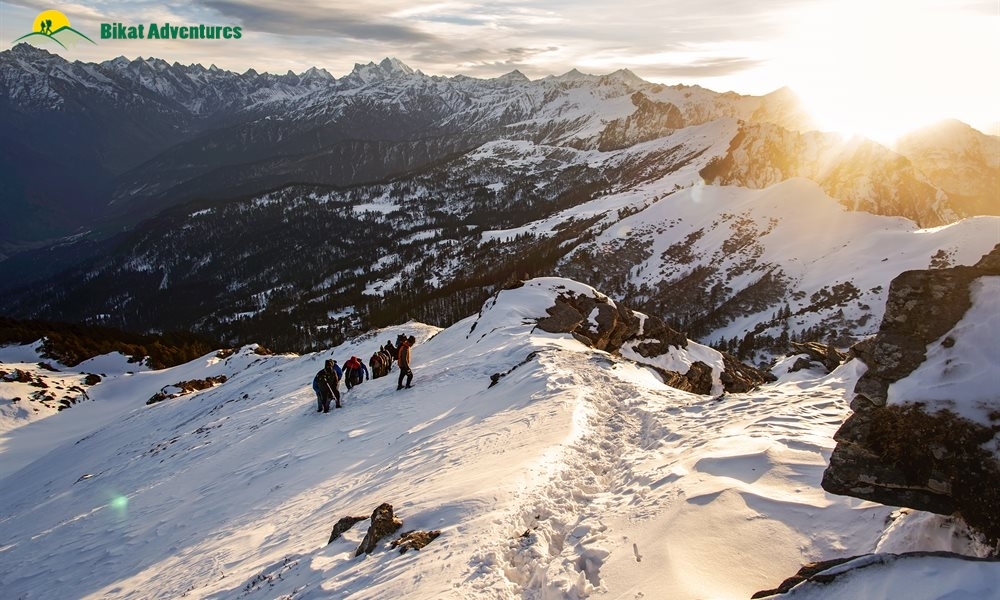
The Kedarkantha trek is a highly acclaimed adventure nestled in the Garhwal Himalayas of Uttarakhand, India. Known for its picturesque landscapes, accessible summit, and manageable difficulty, Kedarkantha offers a perfect introduction to Himalayan trekking, especially for beginners. Rising to an elevation of approximately 12,500 feet, this trek offers a journey through dense forests, serene alpine meadows, and spectacular mountain views that captivate both novice and experienced trekkers alike.
This guide covers everything you need to know for a successful Kedarkantha trek. From the ideal trekking seasons to preparation tips, route details, and essential gear, let’s unravel the wonders of Kedarkantha together.
1. Why Choose the Kedarkantha Trek?
The Kedarkantha trek’s allure lies in its unique blend of scenic diversity, manageable altitude, and the thrill of summiting a Himalayan peak. The trek covers around 20 kilometers and is classified as a moderate trek, making it ideal for beginners who wish to experience high-altitude trekking without extreme difficulty.
One of the highlights is the breathtaking sunrise from the Kedarkantha summit. At dawn, trekkers witness the sun rising over the iconic Yamunotri and Gangotri ranges, creating a magical atmosphere. Another reason for its popularity is the trek’s accessibility throughout most of the year, with each season offering distinct natural beauty.
2. Best Seasons for the Kedarkantha Trek
The Kedarkantha trek can be undertaken almost year-round, each season offering unique experiences. Here’s a breakdown of what each season brings:
- Winter (December to February): Winter is the most popular time for this trek. The trail transforms into a snowy paradise, with temperatures often dropping to -10°C at night. Snow lovers find this season magical as the landscape is blanketed with snow, creating unforgettable memories.
- Spring (March to April): As the snow melts, vibrant rhododendron flowers bloom along the trail, adding color to the scenery. Daytime temperatures range from 5°C to 15°C, making it comfortable for trekking.
- Summer (May to June): Summer offers lush greenery, blooming flora, and clear skies. This season’s moderate temperatures (10°C to 20°C during the day) make it popular among families and first-time trekkers.
- Autumn (September to November): Autumn brings post-monsoon clarity, providing crisp mountain views. With stable weather and minimal haze, this is another favored season for trekkers seeking serene landscapes without heavy snowfall.
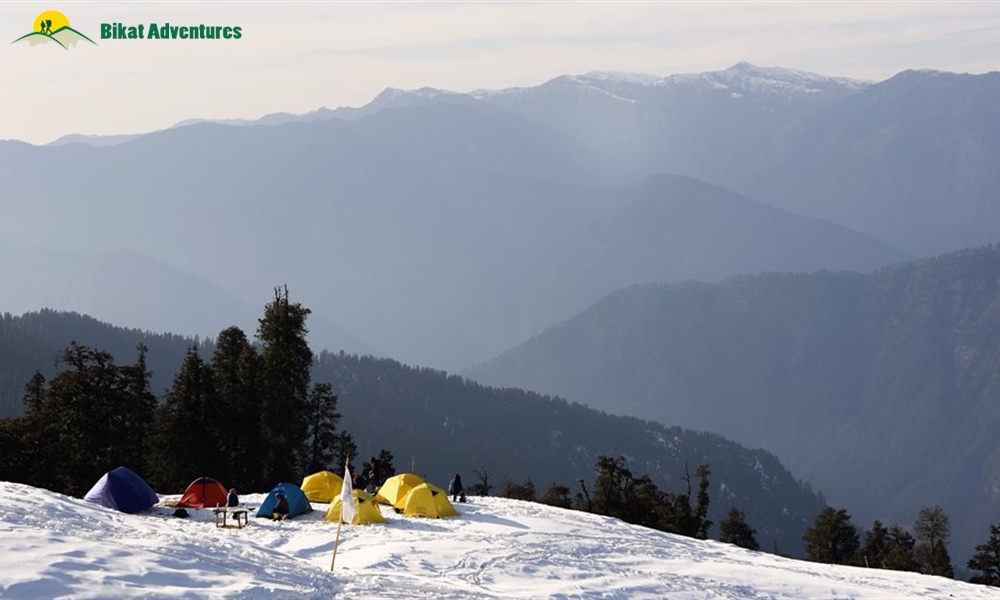
The Kedarkantha trek typically follows a 5-day itinerary. Here’s a day-by-day overview:
- Day 1: Dehradun to Sankri (6,400 feet)
- Starting from Dehradun, a scenic drive of 210 kilometers brings you to Sankri, the trek’s base camp. Passing through beautiful landscapes, this journey provides the first glimpse of Himalayan majesty.
- Day 2: Sankri to Juda Ka Talab (9,100 feet)
- This day involves a 4-kilometer trek from Sankri to Juda Ka Talab, a tranquil lake surrounded by dense pine forests. In winter, this region is often covered in snow, giving trekkers a taste of the snowy trails ahead.
- Day 3: Juda Ka Talab to Kedarkantha Base Camp (11,200 feet)
- A slightly steeper ascent awaits, as trekkers cover another 4 kilometers to Kedarkantha Base Camp. This leg offers scenic views and prepares you for the ultimate summit day.
- Day 4: Summit Kedarkantha (12,500 feet) and descend to Hargaon
- The summit day is the most challenging but also the most rewarding. Trekkers start early to reach the summit by sunrise, witnessing unforgettable panoramic views before descending to Hargaon.
- Day 5: Hargaon to Sankri
- The trek concludes with a gentle descent back to Sankri, marking the end of an exhilarating adventure.
4. Kedarkantha Trek Difficulty and Fitness Requirements
The Kedarkantha trek is generally rated moderate on the difficulty scale, suitable for beginners with basic fitness levels. Trekking involves 4-5 hours daily, except on summit day, which can extend to 7-8 hours. The most demanding segment is the summit ascent, especially challenging in winter due to snow.
To fully enjoy the trek, a preparatory fitness routine is recommended. Regular jogging, cardio exercises, and leg-strengthening workouts like squats and lunges are ideal. Additionally, practice hikes on uneven terrain can help improve balance and endurance.
5. Essential Gear for the Kedarkantha Trek
Proper equipment enhances safety and comfort on this high-altitude trek. Here’s a checklist of essential items:
- Clothing: Layered clothing is crucial. Start with thermal wear as a base layer, followed by fleece or down jackets for insulation, and a waterproof outer layer.
- Footwear: Waterproof, high-ankle trekking shoes with sturdy soles are essential. Microspikes and gaiters are highly recommended for snow trekking.
- Backpack: A lightweight, comfortable backpack with padded shoulder straps and hip belts is ideal for carrying essentials.
Other items include a trekking pole (for stability on steep trails), a water bottle, sunscreen, a hat, gloves, and a headlamp for summit day.
6. Weather Considerations and Preparation Tips
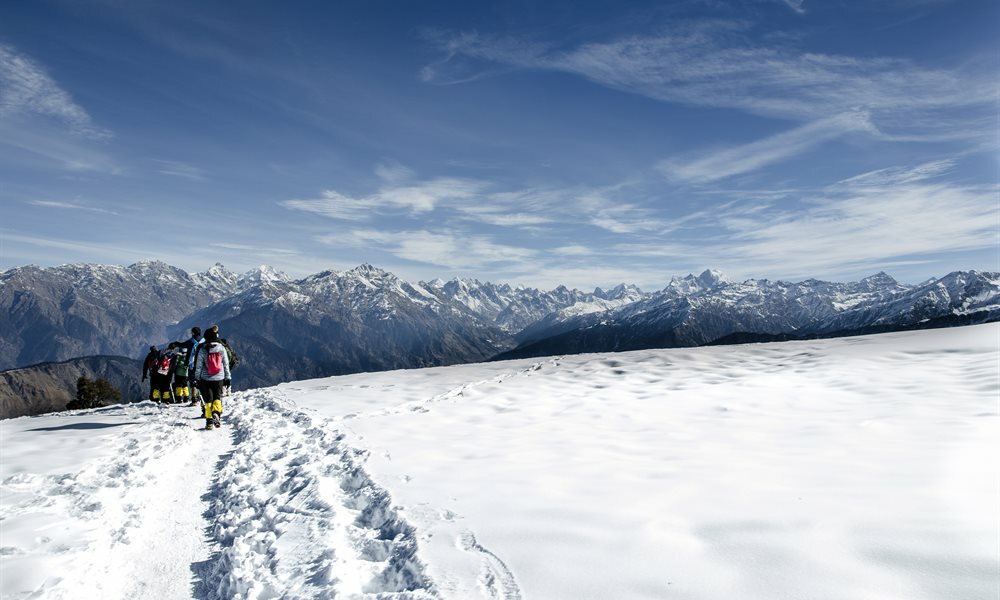
Kedarkantha’s weather can vary significantly depending on the season:
- Winter: Snowfall can reach several feet, especially above 10,000 feet, making microspikes and proper insulation mandatory.
- Spring and Summer: Milder weather makes hydration essential. Light but protective clothing shields from intense sunlight at higher altitudes.
- Autumn: Clear skies with stable temperatures are ideal, though early snowfall is possible in November.
Acclimatization is essential, even though Kedarkantha’s altitude is moderate. Take breaks, stay hydrated, and avoid overexertion to prevent altitude sickness.
7. Challenges of the Kedarkantha Trek
While Kedarkantha is beginner-friendly, it does present certain challenges:
- Summit Day’s Steep Ascent: The summit day’s steep incline, combined with snow, demands mental resilience and physical endurance.
- Inclement Weather: Winter storms and sudden snowfalls can create slippery trails and limited visibility, requiring caution and adaptability.
With these challenges in mind, follow the guidance of experienced trek leaders and stay prepared for changing weather conditions.
8. Exploring Beyond Kedarkantha: Nearby Treks
For those inspired by Kedarkantha, Uttarakhand offers several other beautiful trekking destinations:
- Nag Tibba Trek: A short, 2-day trek near Mussoorie, ideal for beginners and weekend adventurers.
- Har Ki Dun Trek: A historical trek offering views of snow-capped peaks and a glimpse into local legends.
- Valley of Flowers Trek: Known for its vibrant alpine flowers, this trek is best during the monsoon season.
- Chopta-Tungnath-Chandrashila Trek: A moderate trek with the added attraction of visiting the highest Shiva temple in the world.
Each of these treks offers unique landscapes, cultural experiences, and varying levels of challenge, making Uttarakhand a treasure trove for trekkers.
9. Safety Tips and Guidelines
Safety should always be a priority. Here are some tips to keep in mind:
- Stay with the Group: Sticking with your trekking group reduces the risk of getting lost on the trails.
- Listen to Your Guide: Trek leaders provide valuable advice on handling difficult sections and responding to weather changes.
- Pack Light: A heavy backpack can make the trek more tiring. Pack only essential items.
- Stay Hydrated and Nourished: High-altitude trekking suppresses thirst, so drink water regularly and consume high-energy snacks.
10. Conclusion
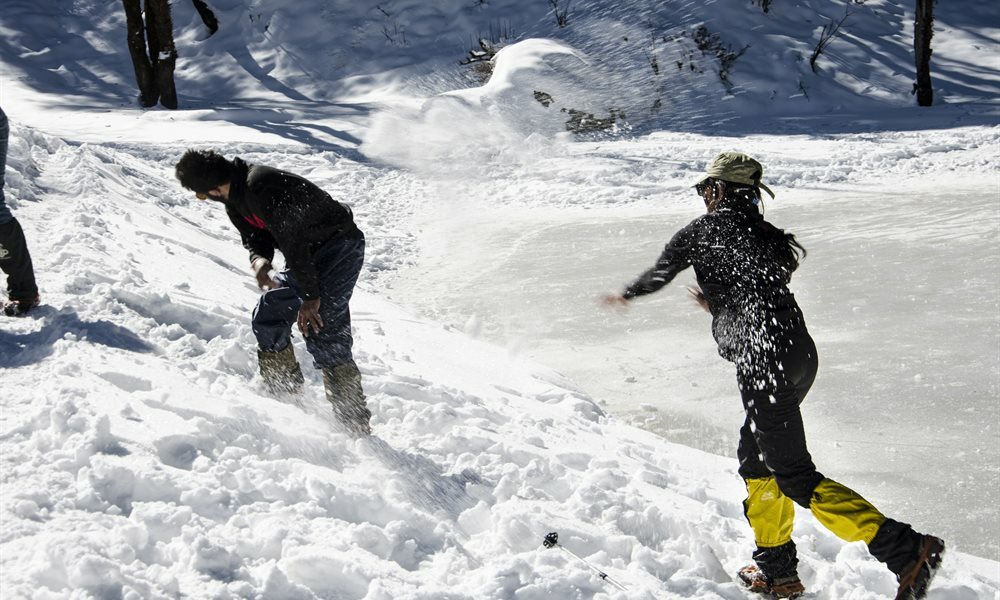
The Kedarkantha trek is a perfect blend of adventure, scenic beauty, and cultural exposure, offering an unforgettable experience for beginners and seasoned trekkers alike. Whether you are drawn by the snow-laden landscapes of winter, the floral blooms of spring, or the crisp, clear views of autumn, Kedarkantha is a destination that promises lasting memories.
As you prepare for this journey, remember that every trek is unique, each offering its own lessons and rewards. Pack wisely, train diligently, and embark on the Kedarkantha trek with an open heart and a spirit ready to embrace the Himalayas.





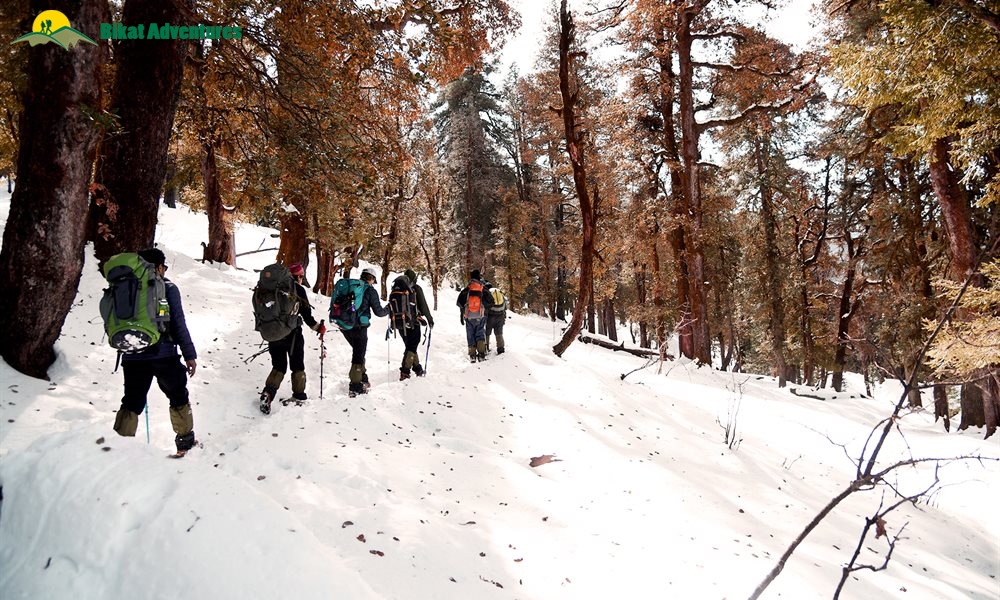
Comments